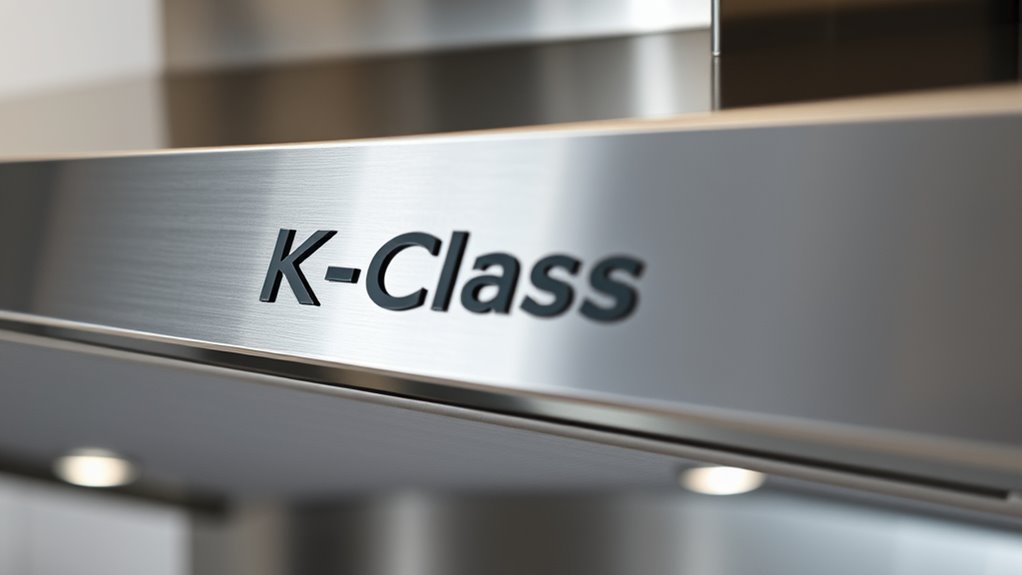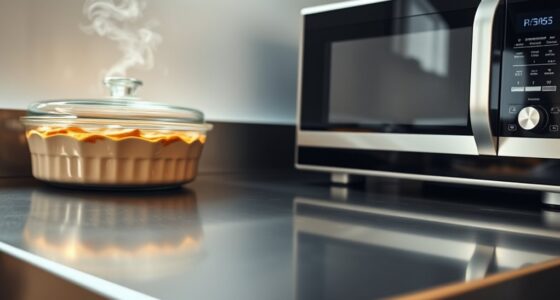To keep your hood suppression (K-Class) system working properly, you should have inspections at least every six months, especially after maintenance or modifications. Some areas or high-risk kitchens may require more frequent checks, like quarterly inspections. Regular visual inspections plus professional servicing help identify issues early, keep safety standards, and assure system readiness during emergencies. Continuing with this information will help you understand the best practices for maintaining compliance and safety.
Key Takeaways
- Inspections should be conducted at least every six months to ensure system reliability and safety.
- Post-maintenance or modifications, inspections are necessary to confirm compliance and proper functioning.
- Some jurisdictions or high-risk environments may require quarterly or more frequent inspections.
- Regular inspections help identify component deterioration, obstructions, or corrosion early.
- Proper recordkeeping of inspections and repairs is essential for safety audits and legal compliance.

Regularly inspecting your hood suppression system is crucial for ensuring it functions correctly in an emergency. When it comes to fire suppression systems, especially K-class hood suppression systems, maintaining the right inspection frequency is critical. If you neglect these inspections, you risk system failure when you need it most, potentially leading to extensive property damage or injury. That’s why understanding and adhering to proper inspection intervals is indispensable for safety and compliance.
Regular inspections ensure your hood suppression system functions reliably during emergencies.
In general, fire suppression experts recommend inspecting your hood suppression system at least once every six months. This inspection frequency helps identify potential issues before they become serious problems. During each inspection, you’ll want to check that the system’s components—such as the nozzles, piping, actuation devices, and the agent storage container—are in good condition and free of obstructions or corrosion. You should also verify that the system’s pressure is within operational limits and that any warning devices or alarms are functioning properly. Consistent inspections ensure the system’s readiness, so it can immediately activate in case of a fire.
Additionally, after any maintenance, system activation, or modifications to your kitchen hood or ventilation system, you’ll need to conduct a thorough inspection to confirm everything remains compliant with fire safety standards. Some jurisdictions or insurance policies might require more frequent checks, such as quarterly inspections, especially in high-risk environments like commercial kitchens with heavy cooking operations. Always refer to local codes and manufacturer guidelines to determine the appropriate inspection frequency for your specific setup.
It’s also important to remember that proper system maintenance can extend the lifespan of your suppression system and ensure it remains fully operational when needed.
It’s also important to keep detailed records of each inspection. Documenting the date, findings, and any corrective actions taken helps ensure ongoing compliance and provides proof of regular maintenance. This documentation can be useful during safety audits or insurance reviews. Furthermore, trained professionals should perform the inspections, as they have the expertise to identify subtle issues that might escape a casual check. While visual inspections are a good start, periodic professional servicing guarantees that the system remains fully operational.
Ultimately, regular inspections of your hood suppression system aren’t just about meeting legal requirements—they’re about protecting your property, employees, and customers. By sticking to the recommended inspection frequency, you ensure your fire suppression system is always ready to respond effectively during a fire emergency. This proactive approach minimizes risks, preserves safety, and helps you maintain peace of mind knowing your kitchen is well-protected.
Frequently Asked Questions
How Often Should Hood Suppression Systems Be Tested for Optimal Performance?
You should test your fire suppression hood system at least once every six months to guarantee peak performance. Regular inspections follow strict protocols, including checking for proper activation, integrity, and function of the suppression agents. Adhering to these inspection protocols helps catch potential issues early, keeping your system reliable during emergencies. Consistent testing not only maintains safety standards but also ensures your fire suppression system functions effectively when needed most.
What Are the Signs Indicating a Need for Immediate Inspection?
If you notice a fire hazard, system malfunction, or unusual noises from your hood suppression system, it’s a clear sign you need an immediate inspection. Also, if the system isn’t activating during tests or shows physical damage, don’t delay. These signs indicate potential failures that could compromise safety. Regularly check for warning lights or alerts, and always prioritize prompt inspections to make certain your system functions correctly when needed.
Are There Industry Standards Governing Inspection Intervals?
Yes, industry standards do govern inspection intervals for hood suppression systems. You need to stay on top of fire safety and compliance requirements, which often specify regular inspections—monthly, quarterly, or annually—depending on your system and local codes. Missing these intervals amplifies risks, so schedule inspections proactively. This vigilance ensures your system remains reliable, protecting lives and property while keeping you compliant with industry best practices.
How Does Environmental Exposure Affect Inspection Frequency?
Environmental factors play a significant role in your inspection scheduling. If your hood suppression system is exposed to harsh conditions like dust, humidity, or chemicals, you should inspect it more frequently to guarantee proper function. Regularly assess how environmental exposure impacts the system’s condition, and adjust your inspection intervals accordingly. Staying vigilant helps prevent potential failures, ensuring safety and compliance with industry standards.
What Are the Consequences of Neglecting Regular Hood Suppression Checks?
Neglecting regular hood suppression checks jeopardizes fire safety and can lead to system failure during emergencies. Without proper maintenance scheduling, your suppression system may become less effective, risking property damage or injury. Failing to inspect regularly means you might miss potential issues like clogs or leaks, which compromise safety. Keep up with inspections to guarantee your fire safety measures are always ready, protecting lives and assets.
Conclusion
Think of hood suppression inspection intervals like tuning a fine instrument—you need to check regularly to keep it sounding perfect. By staying proactive, you prevent issues before they escalate, ensuring safety and efficiency. Skipping inspections is like ignoring a warning light on your dashboard; it might seem minor, but it can lead to bigger problems. Keep up with your inspections, and you’ll maintain smooth operation, just like a well-played symphony that stays in harmony.









